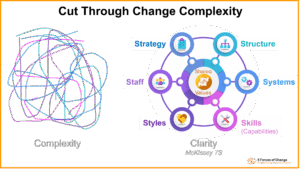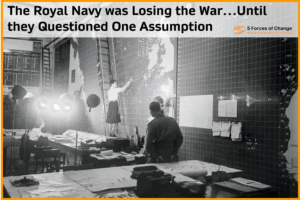When you speak to managers about the importance of communicating change, involving people in change and setting clear direction they nod wisely and agree. So why is it that so many fail to put the advice into practice? Why when deadline loom and budgets are tight the first thing to be abandoned is the ‘soft side’ of change?
Some managers are ignorant of what needs to be done, but, more importantly, many don’t know why it is so important. It is easy to address the first issue, but it will be to no avail if the ‘why’ is missing. In the ‘real world’ managers prioritise based on time, cost and benefit. Change management takes time, costs money and does not deliver easily quantifiable benefit.
There are two solutions to this. The first method is to let the change fail – then you can pick up with pieces once people have learned the hard way. The second is to help people feel the pain of failed change by getting them to tap into the emotions engendered by uncertainty, lack of purpose, feel out of control, going through loss and experiencing failure.






